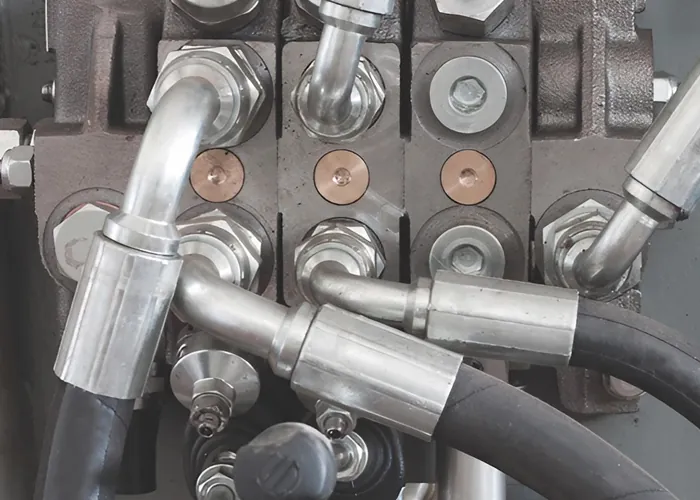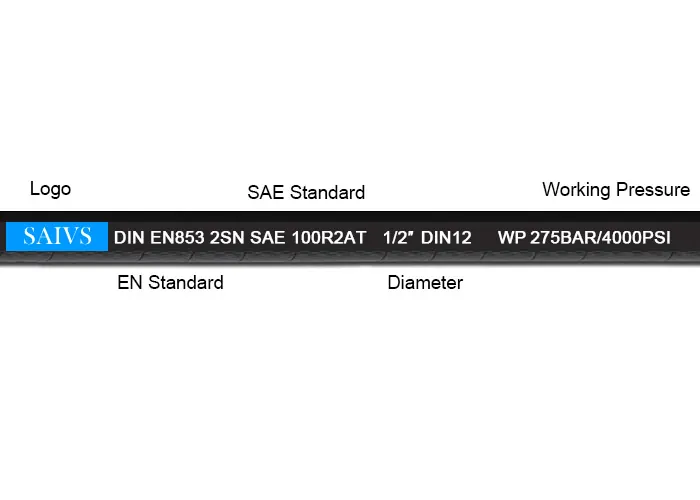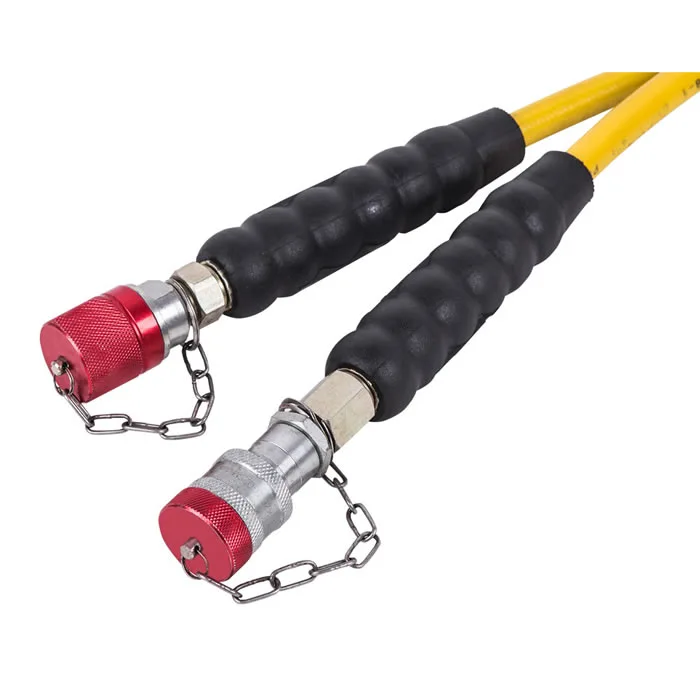Decoding the Secrets of Your Hydraulic Hose: A Guide to Laylines
I. Introduction to hydraulic hose Layline
Hydraulic hose layline, also known as the "layline" or "stripe," is a crucial component of hydraulic hose assemblies. This continuous line of information printed along the outer surface of the hose serves multiple purposes, including:
Identifying hose specifications: The lay line provides essential details about the hose's characteristics, such as the manufacturer, size, Pressure Rating, temperature range, and material composition.
Ensuring proper installation: The laying acts as a visual guide during hose installation, helping to prevent twisting and kinking, which can compromise hose integrity and Performance.
Facilitating maintenance and inspection: The lay line simplifies hose identification during maintenance and inspection procedures, ensuring the correct hose is used and potential issues are addressed promptly.

II. Applications of Hydraulic Hose Layline
Hydraulic hose lay line finds extensive applications in various industries and machinery, including:
Construction equipment: Hydraulic hoses power excavators, bulldozers, backhoes, and other construction machinery, and the laying ensures proper hose selection and installation for optimal performance and safety.
Agricultural machinery: Hydraulic Systems drive tractors, harvesters, irrigation systems, and other agricultural equipment, relying on the layline for accurate hose identification and routing.
Industrial machinery: Hydraulic power is essential for manufacturing processes, powering presses, conveyors, and machine tools, with the layline playing a critical role in hose maintenance and troubleshooting.
Automotive applications: hydraulic systems are employed in various automotive applications, including power steering, brakes, and suspension systems, and the laying ensures the correct hose is used for each specific function.
III. Decoding Hydraulic Hose Layline Information
The laying on a hydraulic hose typically contains a series of markings that convey important information about the hose's characteristics. These markings can vary slightly among different manufacturers but generally include:
Logo: Customize the logo or brand name(SAIVS) printed at the beginning of the hydraulic hose to represent your brand identity.
Hydraulic Hose Standard: Print essential hydraulic hosen standards, such as EN and SAE standards, on the lay line to certify the hose's quality and compliance.
Pressure rating: The maximum working pressure the hose can withstand is specified, ensuring it can handle the system's operating pressures.
Temperature range: The range of temperatures within which the hose can safely operate is indicated, preventing exposure to extreme temperatures that could damage the hose.
Diameter: The diameter indicates the hose size, aiding in selecting the appropriate hose for your hydraulic system. For instance, 1/2" or DN12 denotes the hydraulic hose size.
Date of manufacture: The date when the hose was manufactured is often included, providing a reference for tracking its age and potential replacement needs.

IV. Practical Applications of Hydraulic Hose Layline
The laying plays a vital role in various aspects of hydraulic hose usage:
Hose selection: When selecting a hydraulic hose for a specific application, the information on the layline ensures that the hose is compatible with the system's pressure, temperature, and fluid requirements.
Hose routing: The laying guides the hose during installation, preventing twisting and kinking that can restrict fluid flow and strain the hose.
Hose inspection: During regular inspections, the layline facilitates the identification of the hose and verification of its specifications against the system's requirements.
Troubleshooting: When troubleshooting hydraulic system issues, the layline can help identify damaged or incompatible hoses.
V. Considerations and FAQs Regarding Hydraulic Hose Layline
Several factors should be considered when working with hydraulic hose laying:
Layline visibility: Ensure the layline is visible throughout the hose's length for proper identification and inspection.
Layline orientation: Avoid twisting or wrapping the hose during installation, as this can obscure the layline markings.
Layline protection: Protect the layline from abrasion and damage during installation and operation to maintain its readability.
Frequently Asked Questions (FAQs)
Q: What is the purpose of the laying on a hydraulic hose?
A: The layline serves as a source of essential information about the hose's specifications, aids in proper installation, and facilitates maintenance and inspection.
Q: How do I read the information on the layline?
A: The layline typically contains markings indicating the manufacturer, hose size, pressure rating, temperature range, material composition, and date of manufacture.
Why Choose SAIVS™ as Your Supplier?
With 20 years of industry experience, SAIVS is a leading Chinese manufacturer of high-quality tools, offering competitive pricing and excellent customer service.We pride ourselves on exceptional quality control, extensive experience, and comprehensive after-sales service.
